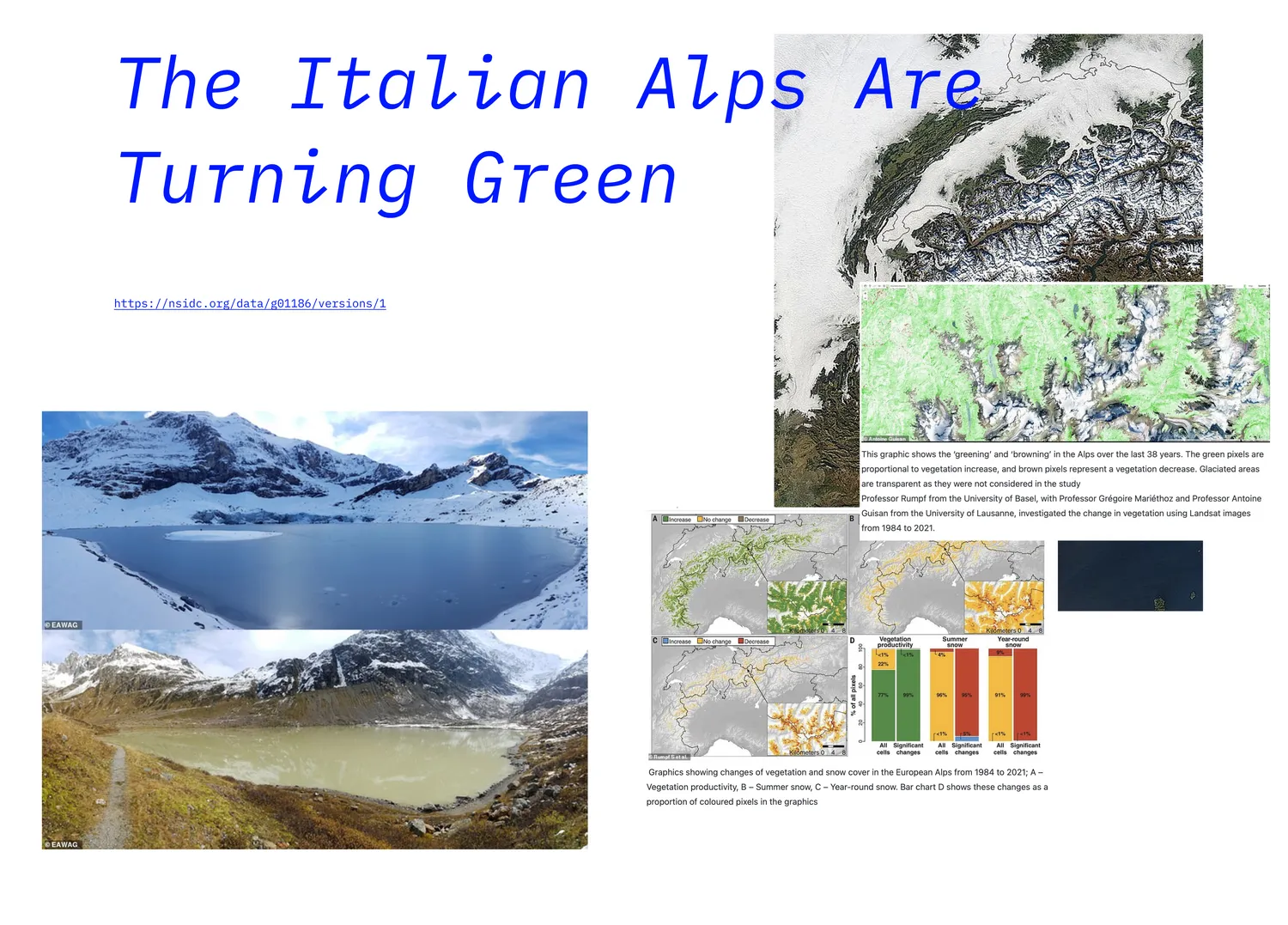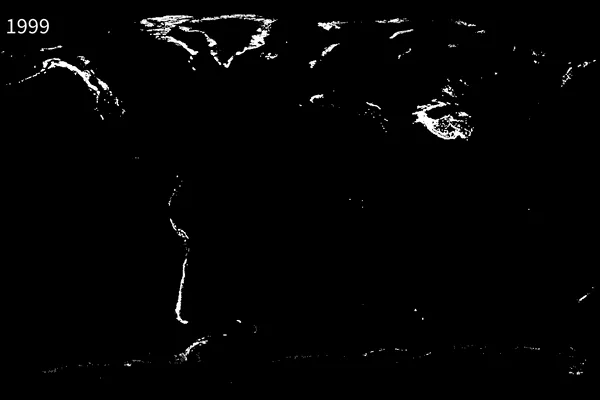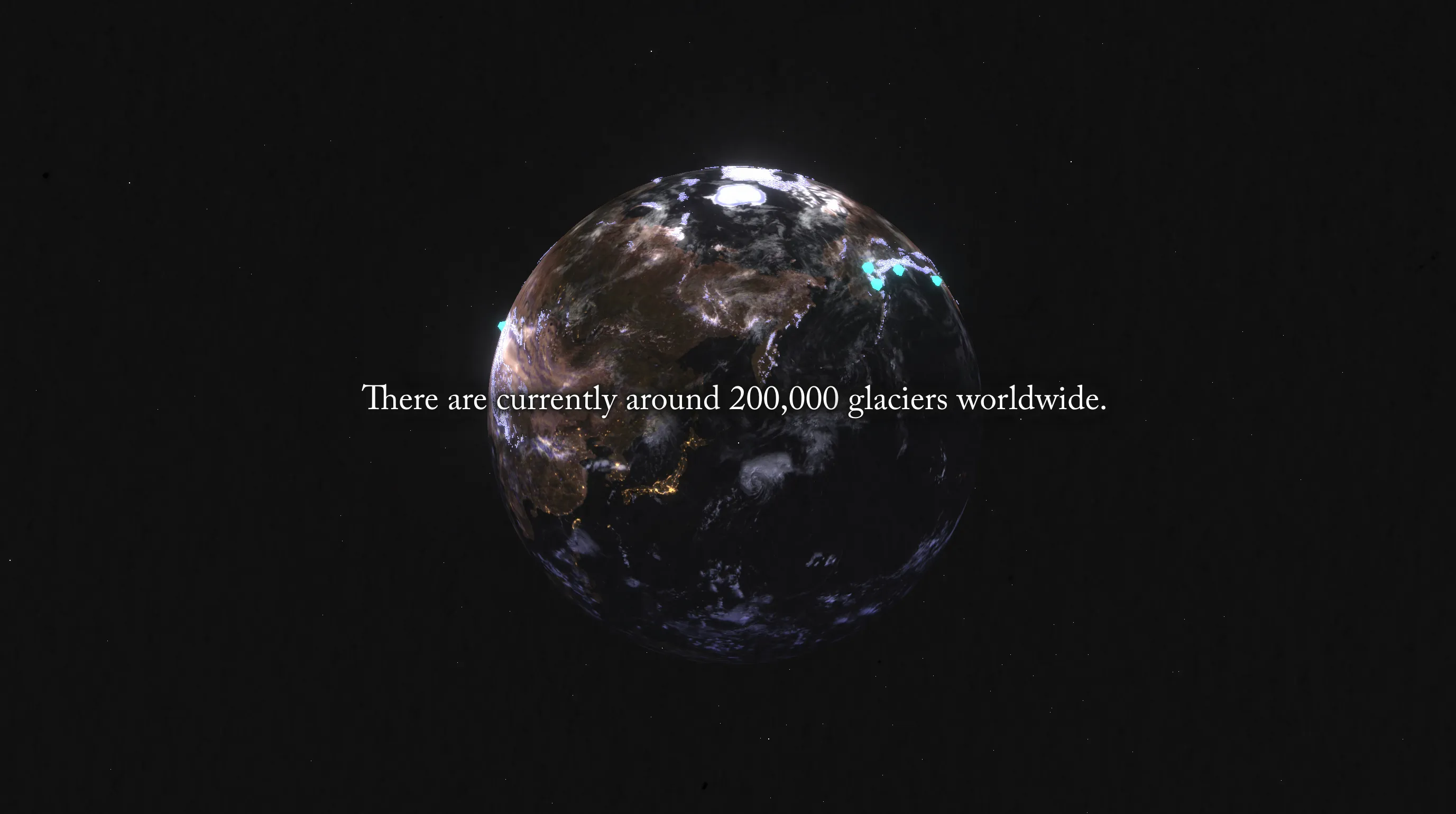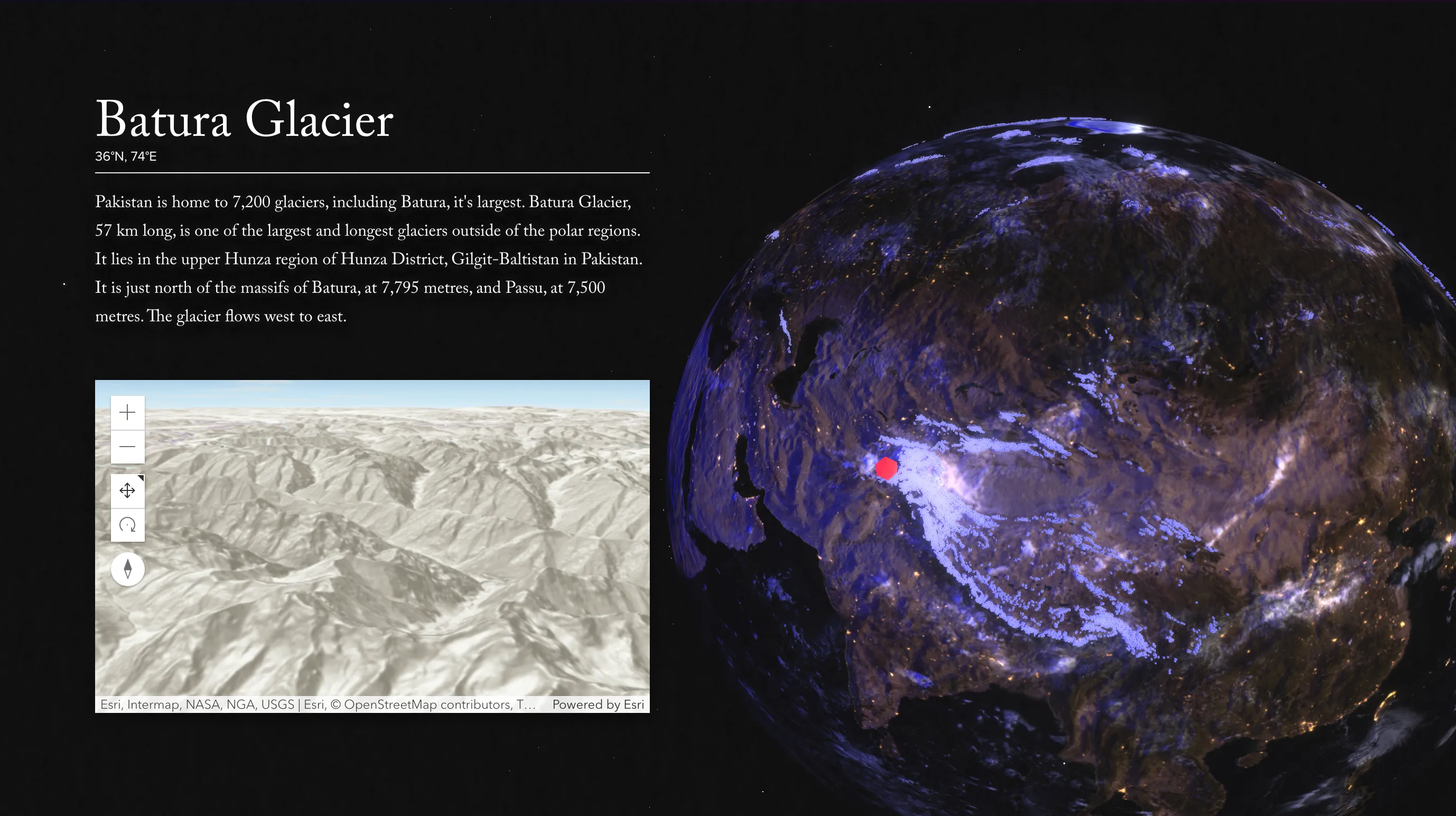Witnessing Glaciers
Website
Research
Data-driven
Website
Research
Data-driven
2022
I began with extensive background research, diving deep into the world of glaciers, initially concentrating on the Alps but eventually expanding my scope to a global perspective. After discovering the World Glacier Monitoring Service's database, which tracks the size and mass of glaciers worldwide over time, I immediately started sketching ideas to explore interesting ways to present this data.

Collecting research in figma
Through coding in Processing, I created animations that depicted the alarming rate at which glaciers around the world are shrinking. The WGMS dataset also highlighted the "Benchmark glaciers," which are heavily monitored and serve as representatives for global glacier trends.
 First processing sketch
First processing sketch 



In addition to these data-driven explorations, I conducted looser studies aimed at sparking creative ideas. In a unique approach, I converted the glacier data into MIDI notes and ran them through a synthesizer, resulting in ancient, otherworldly sounds that directly informed the art direction for the final website.
The culmination of my efforts was an interactive scrollytelling website that brought the global glacier crisis to life. Leveraging Three.js, I used a 3D model of the Earth and mapped all the world's glaciers from the WGMS database onto the sphere. As visitors scroll through the site, the camera moves around the globe, zooming in on key glaciers and narrating their decline. The website serves as an immersive and educational story, allowing visitors to explore, learn about glaciers, and become inspired to take action to preserve these majestic natural wonders for future generations.



